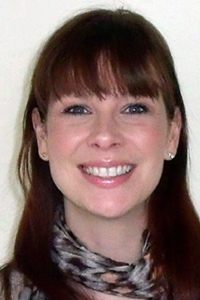
Fixed orthodontic appliances have been in use since the 19th century, utilising mechanoforce application to stimulate molecular changes within the tissues of the periodontal ligament, and surrounding alveolar bone. Whilst there is still much to learn about the precise mechanisms underpinning the changes seen in these tissues, much research has been carried out in this area. However very few studies have examined the effects of force application upon the pulpo-dentinal complex, despite the potential for force transduction to this tissue.
It has been shown that mechanoforce application to teeth will produce cellular effects at the pulpal core, with upregulation of genes associated with cellular proliferation, but the magnitude of the force is absorbed by the dentinal layer.
Odontoblasts are the only viable cells in communication with the dentine and the core of the pulp and thus it is likely that inter-cellular signalling pathways exist between cells of the dentine-pulp complex, however the nature of the signalling pathways between cells is not yet understood. It is the aim of this research project to explore these signalling pathways in greater depth.
There is a large body of evidence demonstrating the vital role of integrins, MAPKs and gap junctions in bone cell signalling. These signalling pathways are known also to be present in the pulp and thus is it hypothesised that application of orthodontic forces to teeth could result in up-regulation of gap junctional and integrin/MAPK signalling within the pulp, contributing to force transduction within the tissue.
A novel animal organ culture model has recently been developed at the University of Birmingham, School of Dentistry, in which pre-calibrated orthodontic springs are utilised to apply compression to sections of rat incisor. These sections are then cultured for a 7 day period, prior to fixation, processing, and histological investigation. Currently morphological observations are being undertaken, together with cell-counts. This is to then be followed by immuno-histological examination.
In conjunction with the laboratory-based animal studies ethical approval is currently being sought to conduct a split-mouth, controlled, clinical trial in order to examine the effects of extrusive force upon the human dental pulp tissue. It is hoped that the clinical trial and animal studies together will provide depth, insight and understanding of the mechanisms underpinning orthodontic force transduction, in order to minimise any detrimental iatrogenic effects, with future possibilities for tissue manipulation and regeneration.
Abstract
Aims: To investigate the effects of orthodontic force application on pulpal tissues.
Materials and methods: Sixteen patients were scheduled for bilateral upper premolar removal followed by fixed appliance treatment. Each had a sectional fixed appliance placed in order to extrude one premolar only for a period of 14 days. The contralateral premolar was used as a control. After 14 days both premolars were extracted and processed for MMA or paraffin embedding, and sectioning. The pulpal morphology of both control and test tissues were examined under a light microscope, and fibroblast numbers, together with blood vessel number and area, analysed on serial sections. Immunohistochemical staining for Von Willebrand’s factor and CD31 was undertaken to assess angiogenesis.
Results: No statistically significant difference was found in fibroblast numbers, blood vessel number or angiogenic activity and no morphological differences were observed between the control and test tissues after the 14-day period. However the overall blood vessel area was greater (p<0.05) in the test tissues.
Conclusions: A 2-week application of 50g extrusive force leads to significant blood vessel dilation, but does not give rise to any significant changes in overall pulpal morphology, fibroblast number, blood vessel number, or angiogenesis.
Return to list of Grant Recipients